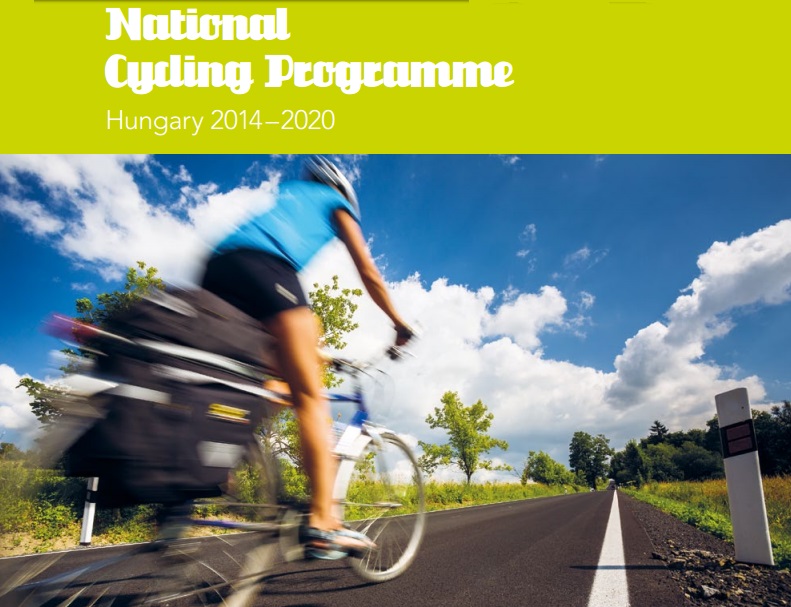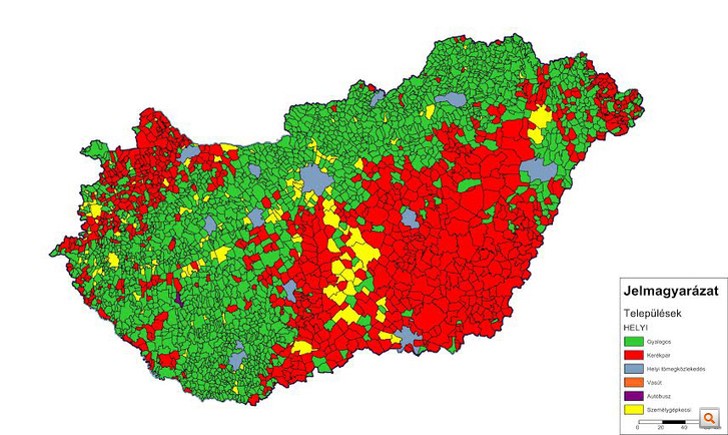
Cycling promotion in Hungary, the uncontested cycling kingdom of Central and Eastern Europe
There are a number of prominent ‘bicycle kingdoms’ on the globe. Looking at Europe, what first comes to mind are the Netherlands and Denmark. What may come as a surprise to many is that regarding cycle use, Hungary ranks third in Europe. With the measures taken by the National Cycling Programme 2014 – 2020, the nation is likely to strengthen that position.
The National Cycling Programme 2014 – 2020 is already in its 3rd year, but with an English short version now available, it becomes accessible to a wider international audience. And it is worth the read.
But let’s first check some numbers regarding cycle use in Europe from Eurobarometer 422 from 2014. In that year, a representative sample of people in all EU-28 Member States was asked the same question: “On a typical day, which mode of transport do you use most often?” In Hungary, 22 % answered that question with “bicycle”, only behind Denmark (23 %) and The Netherlands (36 %). To put the high cycling rate of the Hungarians into context, it is worth to look at how its neighboring countries perform: Austria and Croatia stand both at 6 %, Romania and Slovakia at 7 %, Slovenia at 9 %.
Why does Hungary outperform all other countries in the region by a factor of about 3?
Admittedly, the countries’ flat topography is giving a helping hand, as it does in the Netherlands and Denmark. In the parts marked red on the map, cycling is the main mode of transportation. Those parts also happen to be the flat regions of Hungary. But a favourable topography is not a sufficient reason! What Hungary makes unique among the ‘New’ EU Member States is its very well organized and vocal cycling advocacy. Whereas ECF’s full members, the bicycle users, rely in most of these countries solely on volunteers, the Hungarian Cyclists’ Club has an office with paid staff. And their job is to push the national government to invest in cycling. Witness to that are the two national cycling programmes (1st: 2007 – 2013; 2nd: 2014 – 2020).
The current National Cycling Programme is centred on these 6 ‘intervention areas’:
- Infrastructure development and maintenance
- Development and operation of services
- Education and promotion
- Monitoring and evaluation
- Institutional development
- Regulation

Leading mode of transport on the local level. Cycling: all municipalities which are marked with red.Copyright Trenecon Ltd based on KSH
These ‘intervention areas’ again are divided up into 24 specific measures with all of them having a quantifiable target. For example, under measure 1 it is planned to invest 48 million Euro into the creation of 21 cyclist-friendly settlements or districts. Measure 2 looks at building and maintaining 500km of new regional cycling routes coming at a price tag of another 48 million Euro. Another 121 million Euro will go into the construction and maintenance of 700 km of EuroVelo and national cycling routes (measure 3). Contrary to the 2007 – 2013 period where the focus went on building new infrastructure, maintaining the existing one is now a key element as well.
That the period of the National Cycling Programme runs parallel to the 2014 – 2020 EU Financial Perspective is not a coincidence. Hungary has been a long-standing champion in unlocking EU funds for cycling projects. In total, 297 million Euro is set to be invested from European and national sources into cycling development over the 7-year period, which translates into 4.3 Euro per capita annually. In that regard, Hungary also compares very well with other countries in Europe. (You find a comparative overview of investments here).
Politically boosted by the ‘Declaration of Luxembourg on cycling as a climate-friendly transport mode’ that was signed by State Secretary for Transport, Mr Becsey, on behalf of Hungary, the government is currently in discussion to make the National Cycling Programme 2014 – 2020 a legally binding instrument.
In summary: A vocal and professional cycling community pushing for national strategies that, politically supported, translate into substantial investments in infrastructure and other projects are among the ingredients to make cycling a success.
You can download here the English short version on the Hungarian.
Regions:
Topics:
Contact the author
Recent news!
Upcoming events
Contact Us
Avenue des Arts, 7-8
Postal address: Rue de la Charité, 22
1210 Brussels, Belgium









